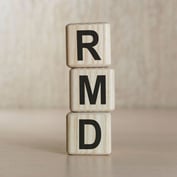Big changes for inherited IRAs came about in 2019. Despite this, the COVID-19 pandemic struck the U.S. mere months after the Setting Every Community Up for Retirement Enhancement Act was signed into law — meaning that for many clients, planning for the significant changes made by the Secure Act may have fallen through the cracks as they struggled to handle the disruptions brought about by the pandemic.
Now, as the dust has begun to settle and hopes for vaccine effectiveness are on the rise, it’s time to revisit changes made to the tax treatment of inherited IRAs. These new rules remain important for clients who anticipate inheriting or leaving an IRA behind — and for those with substantial inherited IRA balances, planning for the changes can be critical to minimizing future tax headaches.
RMD Changes for Inherited IRAs Under the Secure Act
For clients who pass away after Dec. 31, 2019, the “stretch” inherited IRA strategy has been sharply limited. Under the Secure Act rule, almost every client who inherits a retirement account (IRAs, 401(k)s, etc.) in 2020 and beyond will have to empty the account within 10 years— and pay income tax on the distribution.
Generally speaking, if the IRA beneficiary is not an “eligible designated beneficiary,” the entire account must be emptied within 10 years. Eligible designated beneficiaries (EDBs) include spouses, disabled and chronically ill beneficiaries, minor children of the account owner and beneficiaries who are less than 10 years younger than the owner.
EDBs are exempt from the new rules—and can continue to empty the inherited account by taking distributions over their own life expectancy (and can stretch the tax liability over that time period).
However, there are exceptions to the exception. While a surviving spouse can roll the IRA into an IRA in his or her own name — and simply treat it as though it were the surviving spouse’s own account — minor children become subject to the 10-year rule once they reach the age of majority (usually, age 18). Once minor children reach age 18, they have until age 28 to empty the account.
Beneficiaries who are subject to the 10-year rule are not required to take a distribution every year (i.e., the beneficiary can still defer taxes for 10 years and take a lump sum distribution at the end of that period). However, without proper planning, the tax consequences can be serious.
RMDs for Beneficiaries Exempt From the 10-Year Rule
Even IRA beneficiaries who are exempt from the 10-year rule may be required to take an initial RMD from the account soon after inheriting it.









 April 21, 2021 at 11:43 AM
April 21, 2021 at 11:43 AM











